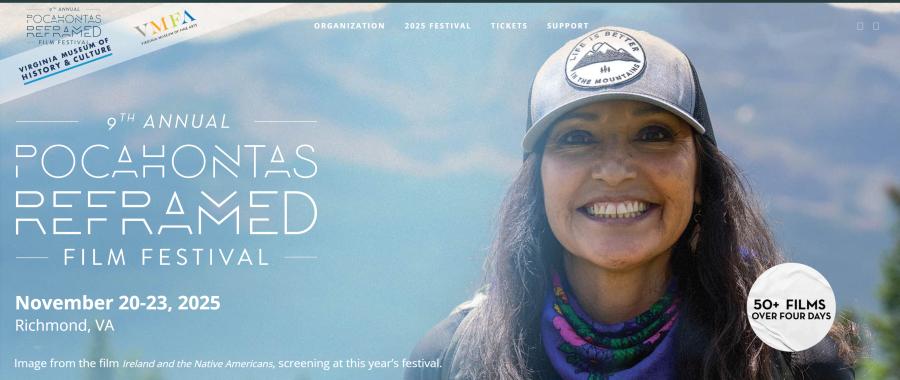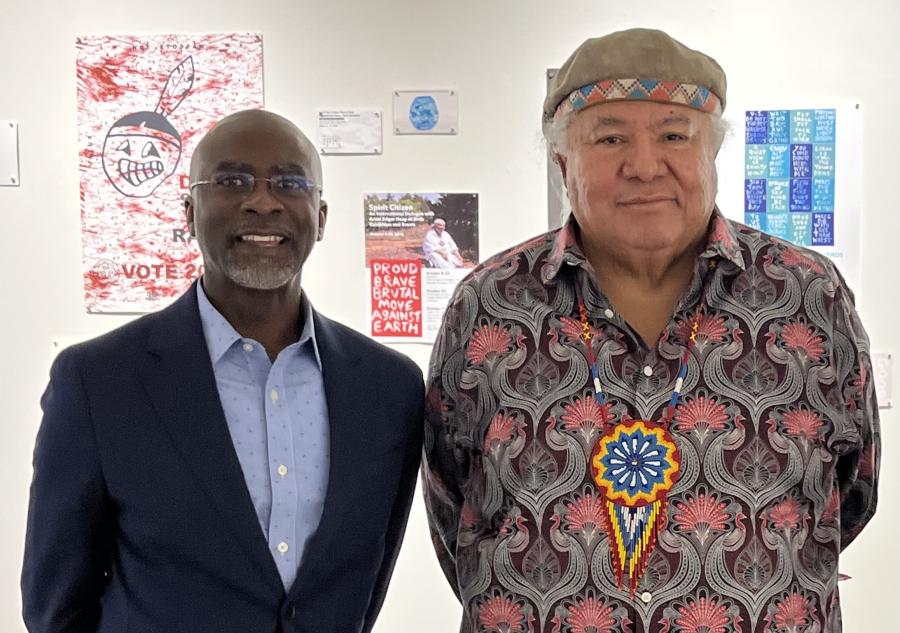The boundaries of the North Slope Borough (NSB) encompass 89,000 square miles, stretching from the foothills of Alaska's Brooks Range to the coastline of the Arctic Ocean. NSB is a subdivision of the state of Alaska and provides the local government structure (similar to a county in other states). There are eight communities in this region: Anaktuvuk Pass, Atqasuk, Barrow, Kaktovik, Nuiqsut, Point Hope, Point Lay, and Wainwright. The population of the North Slope is approximately 7,000-most of whom are Inupiat Eskimo. The Inupiat of the North Slope have a lifestyle that is heavily dependent on the subsistence harvest of marine mammals, land mammals, fish, and migratory birds. Our continued reliance on subsistence hunting is what gives the Inupiat culture strength, confidence, and meaning.
Subsistence Harvest of Bowhead Whales
The bowhead whale is the most culturally significant resource harvested on the North Slope. The Inupiat have hunted the bowhead whale for thousands of years and knowledge of subsistence whaling continues to be taught to our children beginning at an early age. These skills include preparing the umiaq, or traditional skin boat, and coping with the dangers while traveling on sea ice to the whaling camps. Preparing the umiaq begins in summer with the harvest of bearded seals and caribou. The women spend much time preparing the bearded seal skins to be used to cover the boat's wooden frame. Caribou sinew are stripped and dried, then later made into thread, which is used to sew the seal skins to cover the umiaq. Passing on this and other knowledge helps to assure the continuation and survival of the Inupiat culture. It is important to teach the skills and knowledge needed so the younger generation is able to subsist and maintain our cultural existence. Subsistence whaling is a physical, emotional, and spiritual experience which gives our people self confidence and unites our communities.
Caribou
We consider the caribou to be the single most important terrestrial subsistence resource. For all North Slope communities, caribou provide a source of fresh meat throughout the year. One community in particular, Anaktuvuk Pass, is heavily dependent on the subsistence harvest of caribou because it is the only community that does not harvest marine mammals. Anaktuvuk Pass is located in the central Brooks Range directly in the path of a caribou migration corridor. Migrations of caribou take place during the spring and fall and it is during these migrations that the hunters of Anaktuvuk Pass harvest the majority of their caribou. Following a traditional custom, the hunters allow the first groups of caribou to migrate through the pass with no disturbance. They believe this will assure that the rest of the caribou herd will follow. If the caribou from the first groups are frightened, the caribou behind will sense the danger and change the direction of the migration. When the elders feel enough caribou have gone by, the hunt begins. Ninety percent of their annual caribou harvests take place within 15 miles of the community. The caribou are shared throughout the community and across the North Slope.
Sharing of Subsistence Resources
Sharing subsistence resources is an important tradition for the people of the North Slope. It is considered one of the most important values in our culture. One example of sharing is the distribution of the bowhead whale. The butchering and distribution of the harvested whale varies from village to village, according to traditional methods. In Barrow, the whale is divided into three main sections. From the front to rear these are the niniq (60% of the whale), tavsi (10% of the whale), and uati (30% of the whale). Bowhead whales are hunted by a crew of nine or ten people and led by a whaling captain. The uati and tavsi are given to the successful whaling captain and are distributed throughout the Inupiat community at various whaling festivals. The niniq is put aside for whaling crews that actively participate in the butchering. Each crew will divide their given share among their own members.
The day after the harvest, the captain hosts a feast at his home to feed the community. This is where fresh uunaalik (an Inupiat delicacy, boiled skin with some underlying blubber), as well as boiled meat, tongue, heart, kidney, and small intestine are served. When the whaling season comes to an end, each successful crew will host a whaling feast called an apugauti. This feast is held on the beach and is prepared by whalers' wives in order to welcome the returning hunters. An Inupiat delicacy called mikigaq (fermented whale meat and maktak), as well as fresh eider duck and nigliq (white-fronted goose) soup are served at this feast.
In June, all successful whaling crews take part in the whaling festival, Nalukataq. Friends and relatives from across the North Slope and other regions of Alaska attend to get a share of whale and join in the traditional blanket toss and dancing that lasts throughout the night. The remainder of the whale is distributed at other festivals throughout the year, such as the Thanksgiving and Christmas feasts. The harvest of bowhead whales is a time of sharing and uniting in our communities.
The Importance of Continuing Subsistence
Subsistence cannot be defined by where you live or how much money you make. For all Native people across Alaska, subsistence is a way of life that is associated with our individual cultures. Some people who don't live in subsistence dependent areas have recently questioned why Natives should continue to harvest subsistence resources.
First, subsistence is a central part the Inupiat culture. Community activities revolve around the seasonal subsistence cycle which provides much needed food to residents. Regardless what the future may bring, the Inupiat will continue to live a subsistence way of life, which is the key to the survival of our culture.
Secondly, the cost of living in rural communities is extremely high and the availability of products cannot be taken for granted. Common items such as bread or milk may not be available in more remote villages for several weeks. When these items are available, bread may cost up to $6 a loaf and a gallon of milk can cost up to $14! In most villages, the cost of gasoline can be as much as $4.50 a gallon. Furthermore, because most rural communities do not have banks, local businesses often take a percentage of paychecks in order to cash them.
Alaska Eskimo Whaling Commission
In 1977, the International Whaling Commission (IWC) banned the harvest of bowhead whales by Alaska Eskimos because of a report erroneously estimating the Bering Sea stock of bowheads to between 600 and 2,000 whales. The Eskimo hunters were notified of the ban in June 1977, which was the first they had heard of the IWC's concern. The whalers responded quickly and established the Alaska Eskimo Whaling Commission (AEWC) to fight the ban, organize the whaling communities, and manage the hunt themselves.
At a special meeting of the IWC in December 1977, the ban was replaced with a quota for 1978 of 18 whales struck or 12 landed, whichever was reached first (this quota was later raised to 20 struck and 14 landed). This compromise followed much work by the hunters who lobbied the U.S. government to recognize their right to whale. The whalers were also certain that the IWC population estimate was too low and called for scientific studies to more accurately determine the population level.
On March 26, 1981, the National Oceanic and Atmospheric Administration (NOAA, the federal agency responsible for managing whales) and the AEWC signed a cooperative agreement. NOAA delegated local management authority for the Eskimo whale harvest to the AEWC, allowing the AEWC to manage the hunt without the presence of federal agents in the whaling communities. The AEWC Management Plan governs the hunters and the AEWC reports the results of each spring and fall subsistence whaling season to the NOAA.
Since 1981, the AEWC has demonstrated the effectiveness of cooperative management. The subsistence whalers are proud of their sound management record, supplementary research, and improvements in the equipment used during the traditional whale hunt. Better methods for estimating the population have helped secure an increased quota closer to the whaling communities' actual need.
Scientific Research
The AEWC strongly encourages and supports scientific research on the bowhead whale and its environment. NSB's Department of Wildlife Management, on behalf of the AEWC, conducts a periodic census of the bowhead whale. The bowhead census consists of a shore-based visual count combined with passive acoustic monitoring using underwater hydrophones that track whales' sounds underwater or under the ice. A sophisticated statistical analysis combines the results of the visual and acoustic counts to produce an estimate of the bowhead population. The AEWC and NSB's Department of Wildlife Management were the first to use acoustic technology as a major component in a whale census.
This cooperative work by the AEWC and NSB's Department of Wildlife Management has produced a more precise estimate of the Bering Sea bowhead population, while helping to advance acoustic monitoring techniques and statistical models for the analysis of population data. The population estimates from the bowhead census are used by the AEWC, NOAA, and the IWC.
Another area of cooperation between NSB and the AEWC is the examination of harvested bowhead whales. Borough and AEWC personnel travel to the site where a whale is landed to obtain body measurements and to collect whale tissues in order to learn more about bowhead anatomy, physiology, reproduction, food habits, and possible effects of an oil spill. Like the census, this has enhanced our understanding of the bowhead whale.
In addition to supporting scientists in their research, the AEWC links the hunters and researchers to share information that is of mutual interest and benefit. Since the hunters spend a great deal of time observing whales and have passed on this knowledge from generation to generation, they can provide considerable information to complement the scientists' research. Such cooperation is a vital part of the AEWC's work and is an example of the benefits of the cooperative management of a subsistence resource.
Acknowledgements
We would like to thank the Alaska Eskimo Whaling Commission, NSB Department of Wildlife Management Director Charles D.N. Brower and staff members Dr. Tom Albert, Craig George, Dr. Todd O'Hara, and Devin Bates for providing administrative support and guidance in developing this article. Special thanks go to Dan Bevington of NSB Planning Department Geographic Information system and Arctic Photo for producing illustrative materials.
Reference
Alaska Eskimo Whaling Commission. 1992. Alaska Eskimo Subsistence Whaling 1992 AEWC. Barrow: Alaska Eskimo Whaling Commission.
Article copyright Cultural Survival, Inc.


